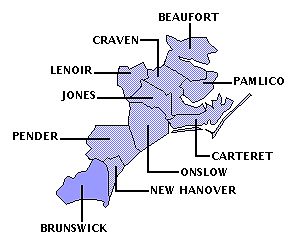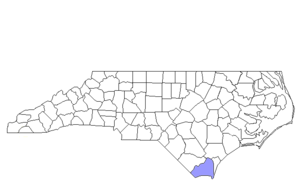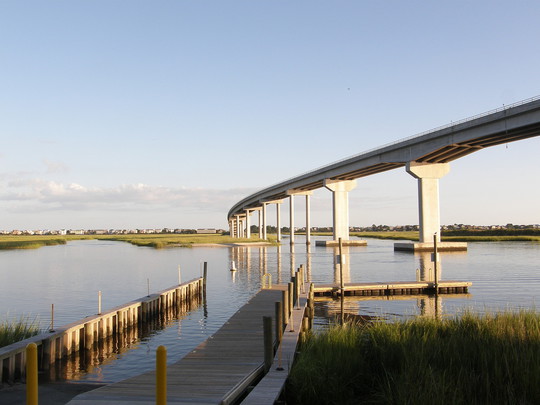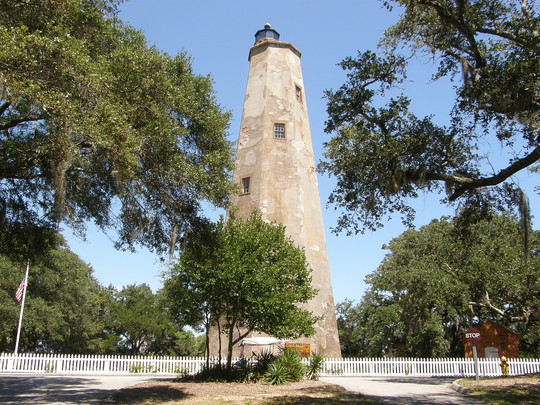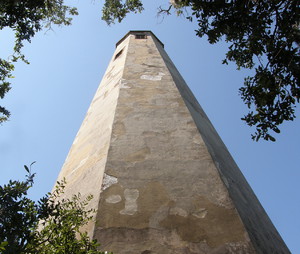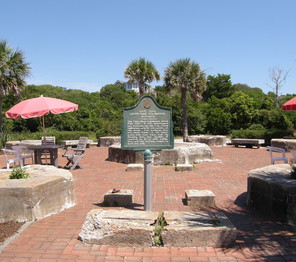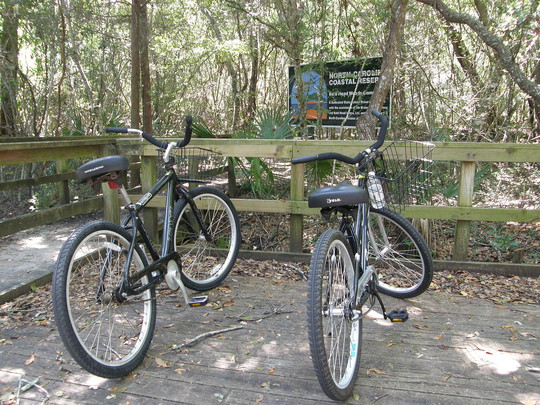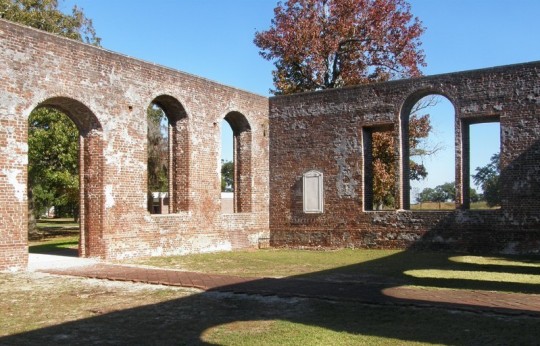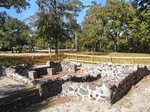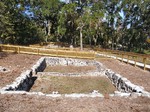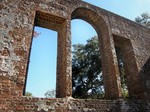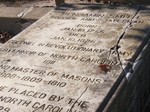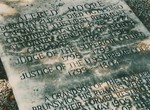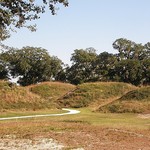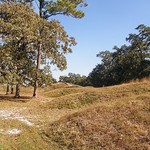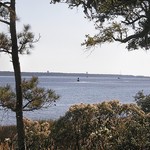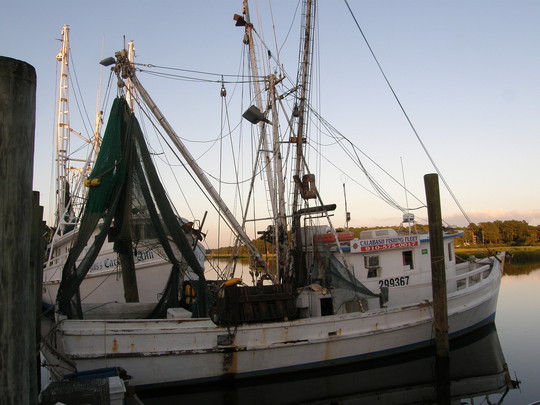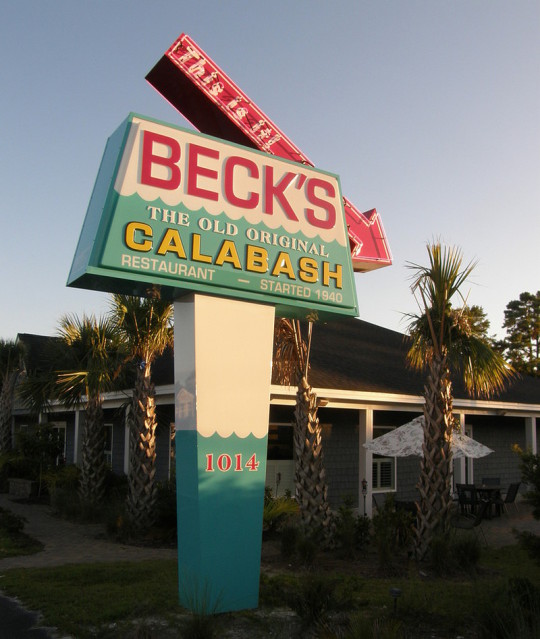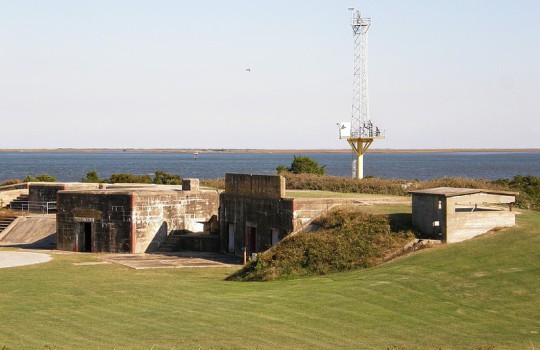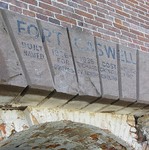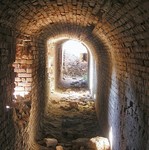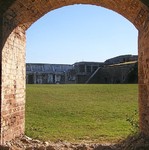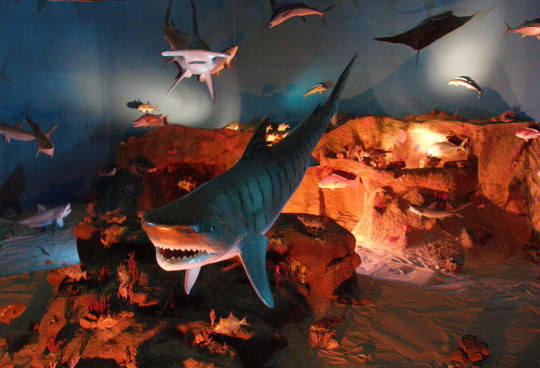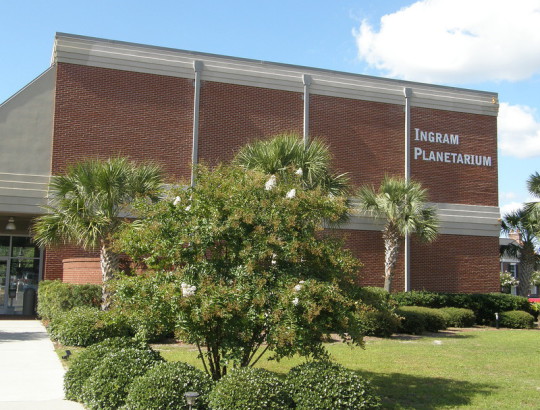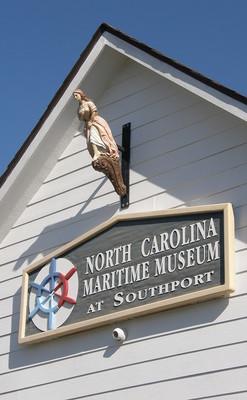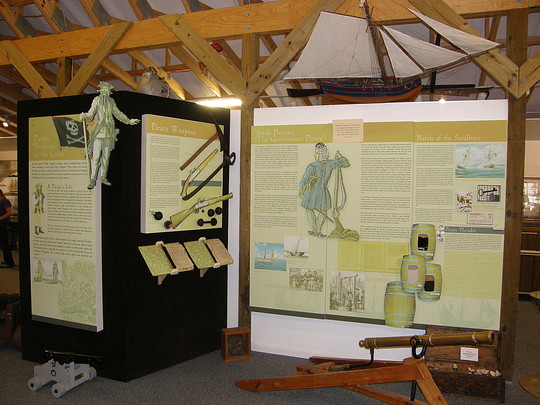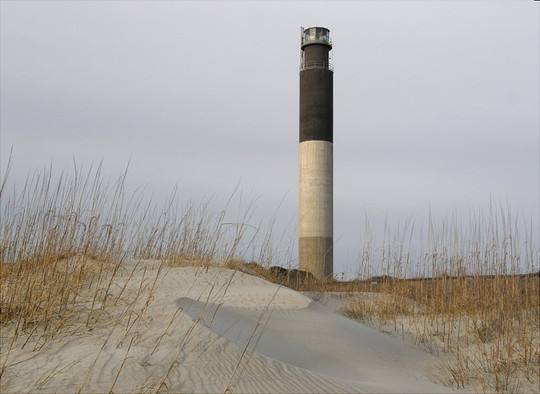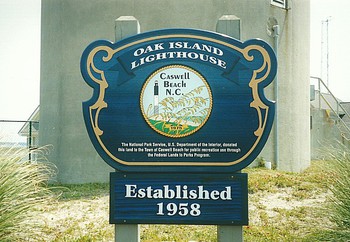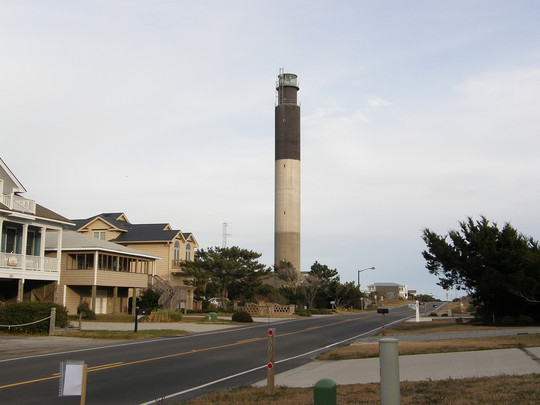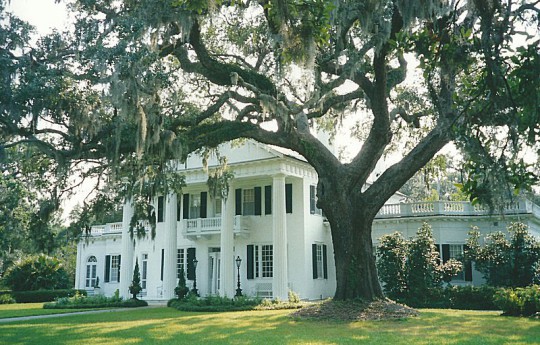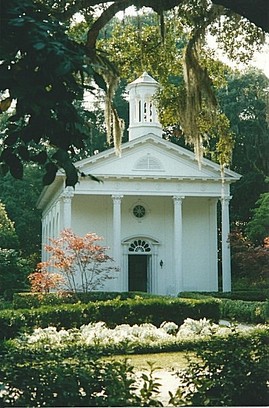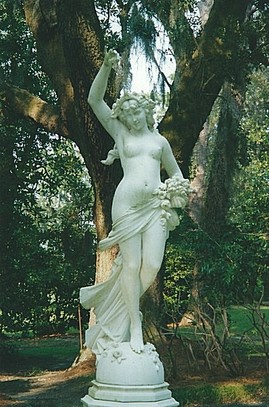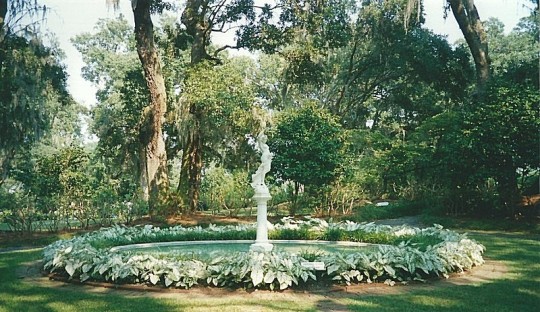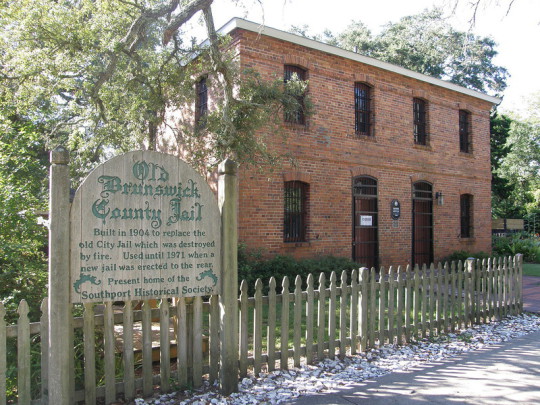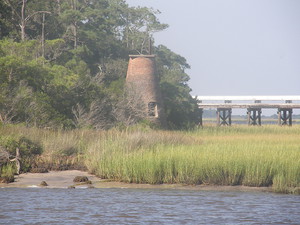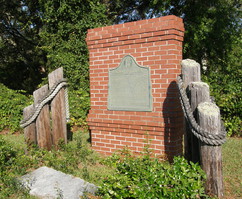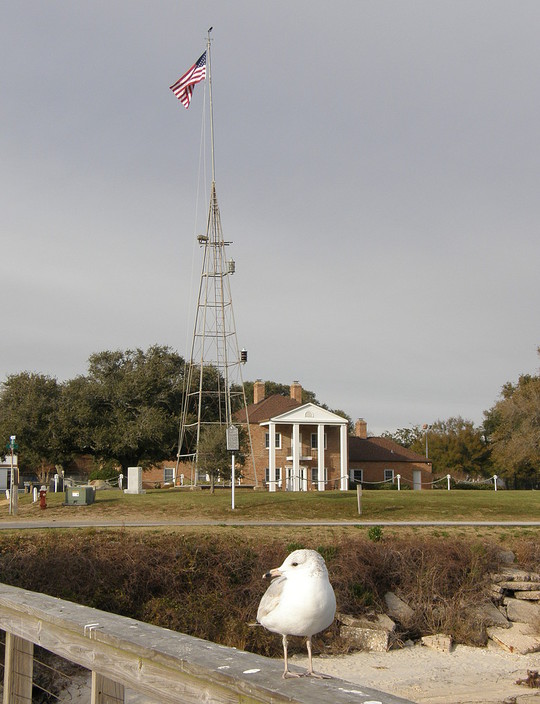BRUNSWICK COUNTY
Scroll down this page or click on specific site name to view features on the following Brunswick County attractions/points of interest:
Bald Head Island Lighthouse, Brunswick Town/Fort Anderson State Historic Site, Calabash, Fort Caswell, Museum of Coastal Carolina/Ingram Planetarium, North Carolina Maritime Museum, Oak Island Lighthouse, Orton Plantation Gardens, Southport
Fast facts about Brunswick County:
Created in 1764, it is named for King George I of Great Britain, Duke of Brunswick.
The county seat is Bolivia, named by the local postmaster after the South American city. Other communities include Calabash, Holden Beach, Leland, Oak Island, Ocean Isle Beach, Shallotte, Southport, and Sunset Beach.
Brunswick County’s land area is 854.71 square miles; the population in the 2010 census was 107,431.
It is worth noting that many of North Carolina’s most popular beaches are located in Brunswick County.
Bald Head Island
Bald Head Island is, as seaside resorts go, about as relaxed and low key as they come. Situated two nautical miles from Southport, Bald Head is North Carolina’s southern-most barrier island and is accessible only by boat. With the exception of service and emergency vehicles, no cars are permitted on the island, and transportation is limited to electric carts, bicycles, and foot traffic. Called Smith Island as far back as 1690, Bald Head Island got its current name from the river pilots who used the “bald” headland on the island’s south-western tip – devoid of vegetation and with a higher elevation – as a place to watch for incoming ships. Some three hundred years ago, the island offered safe haven to the likes of Blackbeard and Stede Bonnet. Today, it is home to a little more than 200 year-round residents. The island’s population naturally swells during the summer season. Condominiums and time shares give visitors to Bald Head Island an opportunity to relax in relative peace and quiet. Amenities include a full-service grocery store, a convenience store, a small selection of restaurants, a handful of specialty and gift shops, and a marina. The Village Chapel, incorporating the Carolina coastal style of the 19thcentury in its design, held its first service on Easter Sunday, 1987; it holds Sunday services at 8:30 AM year-round, with guest ministers arriving from the mainland, and an extra 10 AM service during the summer months. The island covers 12,000 acres, 10,000 of which have been made a protective habitat for sea turtles, alligators, and other wildlife. Bald Head is a key nesting ground for loggerhead turtles.
For those not staying on the island, the famous Bald Head Island Lighthouse makes for a worthwhile trip anyway. Built in 1817, it is the oldest beacon on the N. C. coast and one of about a dozen octagonal lighthouses constructed by the federal government on the east coast. Affectionately referred to as "Old Baldy," the tower is made of brick coated with cement. The lighthouse has an especially weathered, mottled brown appearance, and the lantern house at the top is noticeably off-center. At 100 feet, it is shorter than all the Outer Banks lights except Ocracoke, but those who climb the 108 steps to the top and squeeze through the small rectangular opening into the lantern room are rewarded with an inspiring, panoramic view. It is easy to spot the “new” Oak Island lighthouse, now more than a half-century old, in the distance.
In 2000, replicas of the lighthouse keeper’s cottage and kitchen were built. In addition to featuring a small gift shop, the cottage serves as a museum. Artifacts include glass panes from a Fresnel lens; vintage maps, photographs, and newspaper clippings; and a lyle gun. The latter was used by life-saving station personnel to shoot lightweight ropes out to wrecked ships. This, in turn, allowed heavier ropes to be passed over, which then enabled the rescuers to convey passengers and crew to safety in baskets. Lyle guns had an effective range of 600 yards. The kitchen is illustrative of daily life circa 1850.
Visitors to the island can also see original Confederate earthworks. Fort Holmes was a large earthen strong-hold built under the direction of Major General W. H. C. Whiting. Along with Forts Fisher, Caswell, Johnston, An-derson, and Campbell, Fort Holmes helped guard the two ocean inlets to the Cape Fear.
In 1903, the federal government built the Cape Fear lighthouse on the eastern tip of Bald Head. This steel skeleton beacon was destroyed by the US Coast Guard in 1958 when the Oak Island lighthouse went into service. The foundations of the Cape Fear light remain at the east end of Federal Road. Three structures built to house the lighthouse keeper and his family are nearby; they have been restored, and are available as cottage rentals. The Southport to Bald Head Island ferry leaves the mainland every hour on the hour and departs from the island every hour on the half hour. The crossing takes 20 minutes. The ferry runs daily from 6 AM. Return trips run from 6:30 AM to 11:30 PM, depending upon day and season. Ferry cost for adults is $24.75 roundtrip, $15.75 for children 3-12. 910-457-5003 Operating hours for the lighthouse and museum are 10-4 Tuesday-Saturday and 11-4 Sunday. Admission charged. 910-457-7481
Between Belville and Southport
Brunswick Town/Fort Anderson State Historic Site preserves the excavated foundations of colonial-era Brunswick Town and the restored earthen walls of Fort Anderson, a remnant of the American Civil War. In its fifty-year existence, Brunswick Town was among colonial North Carolina’s most important communities. Established in 1727 near the mouth of the Cape Fear River, Brunswick was the earliest settlement in the region. Named to honor King George I, Duke of Brunswick, the town served as the de facto seat of government for New Hanover County for many years and was one of the colony’s five official ports of entry from 1731 to 1776.
During this period, Brunswick helped establish North Carolina as Great Britain’s greatest source for naval supplies. Royal Governors Arthur Dobbs and William Tryon called Brunswick home, and the town was the scene of one of the most flagrant acts of defiance anywhere in the colonies to the British Stamp Act of 1766. Militant protestors to this tax actually held Governor Tryon a prisoner within his home. In 1776, in the last months of British rule, Brunswick felt the sting of English retaliation. Following a patriot victory over Scottish Highlanders loyal to King George III at the battle of Moore’s Creek, the British took revenge by putting Brunswick Town to the torch. Although an attempt was made to rebuild the town, Wilmington had already supplanted Brunswick as the Cape Fear’s major port, and reconstruction efforts came to naught. Visitors today will find the archeological digs at Brunswick Town very similar to those seen at Jamestown, Virginia and Fort Frederica, Georgia.
Although no complete structures remain, more than twenty foundations have been uncovered. Included among them are those of “Russellborough,” the estate of Governors Dobbs and Tryon. Interpretive signs provide conjectural drawings as to what the structures might have looked like, as well as information about known or probable uses for the buildings. The most dominant site feature is St. Philip’s Church. The walls of this 1754 brick sanctuary still stand, and within their confines is the unmarked grave of Governor Dobbs. Other notable North Carolinians buried at St. Philips are Benjamin Smith, Colonel during the Revolutionary War and North Carolina governor in 1811, and Alfred Moore, also an officer during the War of Independence, a US Supreme Court justice, and grandson of Brunswick Town's founder.
After exploring the remains of Brunswick Town, visitors can walk inside the restored earthworks of Fort Anderson. During the War Between the States, the Confederacy used the old town site for the location of an earthen fort. Built opposite Fort Fisher, on the river’s eastern shore, Fort Anderson was one of a network of strongholds intended to help defend the lower Cape Fear from Union gunboats and warships. The fort was not tested until the fall of Fort Fisher in January 1865. After briefly resisting Federal forces, Fort Anderson’s defenders found their position untenable and abandoned the stronghold. Illustrated markers detail the fort’s significance and the fighting that took place here in February 1865. The state historic site also includes a visitor center that features artifacts, exhibits, and an audiovisual program.
Brunswick Town/Fort Anderson State Historic Site is located on the west bank of the Cape Fear River, about 20 miles south of Wilmington. Brunswick Town State Historic Site is open 10-4 Tuesday-Saturday, and closed Sundays and Mondays. The state historic site also includes a visitor center that features artifacts, exhibits, and an audiovisual program. Tours of the town site and fort are self-guided. 910-371-6613
Calabash
Calabash is the place to go if you're salivating for seafood while cruising the North Carolina's southeastern coast along US Highway 17. Although not incorporated until 1973, the history of Calabash (originally Pea Landing) can actually be traced as far back as 1691. Located on the Tar Heel coast just one mile from the South Carolina state line, Calabash takes great pride in being known as “The Seafood Capital of the World.”
Those old enough to remember Jimmy Durante – the singer-comedian whose self-depreciating humor made fun of his sizeable “schnozzola” – will likely recall the phrase that was his trademark sign-off on radio and television: “Good night, Mrs. Calabash, wherever you are!” According to folks along the NC coast, this unusual way of bidding his audience farewell came about as the result of a visit by Durante and his entertainment troupe to Calabash in 1940. The group stopped off at a restaurant run by 28-year-old Lucille “Lucy” Coleman. Engaging in some lighthearted banter with Lucy over the course of the meal, Durante apparently enjoyed both the meal and the company. He told the young woman, “I’m going to make you famous” and, as he was leaving, Durante bid a cheerful “Good night, Mrs. Calabash,” a farewell which soon became the singer’s signature sign-off. Although Durante kept mum about the meaning of the phrase, friends and neighbors of Mrs. Coleman were pretty sure they knew what it meant. Although the veracity of the story can’t be proven, there’s no denying that Calabash is the “go to” place when it comes to seafood.
Back in the 1930s, during the height of the Great Depression, locals would meet village fishermen as they docked at day’s end to see what they had caught. This soon led to what became known as “fish camps,” where fresh seafood was cooked outdoors, under shady oaks, in large tubs of hot grease. The locally preferred method of cooking was to lightly batter the fish in very fine flour and fry it only briefly, creating a very distinctive “Calabash-style” seafood. Over time, these outdoor fish camps became popular not only with the locals, but also attracted the attention and favor of folks just a few miles down the road (25 miles, to be exact) in Myrtle Beach, South Carolina. Indoor restaurants naturally followed.
Within the community, there’s still a debate about who first started the fish camps. Some say it was Lucy Coleman, others say Ruth Beck. The two women were sisters, and, in 1940, each opened a restaurant. Nearly seventy years later, both businesses are still going strong. Coleman’s “Original Calabash Seafood” Restaurant operates along the banks of the Calabash River, while Beck’s “Old Original Calabash” Restaurant sits just off NC 179, the main highway through town. A sister-in-law of Lucy and Ruth, Ella High, opened the town’s third restaurant in 1950, and still another eatery, the Calabash Seafood Hut, was opened by one of Lucy’s granddaughters. Not too many years ago, Calabash, with a year-round population of only 200 residents, was home to 20 restaurants, a 20-to-1 ratio! The population has grown in recent years, but there’s no question as to what gives this coastal town its identity. Before or after dinner, check out Callahan’s of Calabash. An interesting store selling all manner of beach items and souvenirs, Callahan’s specializes in nautical gifts. Down by the docks, it’s also possible to charter boats for sport fishing or to go on a two-hour dolphin adventure cruise on the inland waterways.
Oak Island
Fort Caswell stands at the eastern tip of Oak Island, only a couple of miles from the Oak Island lighthouse. A masonry fortification, Fort Caswell was built over an eleven year period from 1827-1838. Only one caretaker was living at the fort in 1861 when a troop of North Carolina militia occupied the installation. This peaceful takeover of federal property took place three months prior to the firing on Fort Sumter in Charleston, South Carolina. Fort Caswell helped defend the mouth of the Cape Fear River for four years before the installation was deserted by the Confederates soon after the fall of Fort Fisher. Two cannons taken from the fort by Federal troops in 1865 were later returned to the state and can be seen today flanking the Confederate Monument on the capitol grounds in Raleigh.
The fort is located on property owned by the North Carolina Baptist Assembly and is open for visitors in the off season only (mid-September through mid-April). Fort Caswell was actually taken by the North Carolina militia three months prior to the firing on Fort Sumter. Two cannons removed from the fort by Federal troops when the installation was retaken in 1865 were later returned to the state and today flank the Confederate Monument on the capitol grounds in Raleigh.
Ocean Isle Beach - Sunset Beach
The Museum of Coastal Carolina educates visitors by means of exhibits and dioramas dealing with the natural history, environment, and culture of the region. Examples include the fossilized skeleton of a sperm whale and an interactive exhibit on inlet migration. There’s an outside fossil pit where visitors can dig for shark teeth. The Planetarium features several different programs. The Museum is open seasonally from late May through Labor Day. Hours are 10-8:30 Monday through Thursday, 10-5 Friday, and 10-1:30 Saturday. Admission charged. 910-579-1016
Southport
North Carolina Maritime Museum's Southport branch focuses, appropriately, upon the lower Cape Fear region, where river and ocean meet. Since July, 2011, the Museum has been housed in a new facility at Fort Johnston, behind the Southport Visitor Center. Exhibits include fragments of a 2,000-year-old Indian canoe, artifacts from colonial Brunswick Town, and an unsuccessful plea for clemency written by Stede Bonnet, the “Gentleman Pirate,” captured near present-day Southport and hung for his crimes in Charleston, South Carolina. Other displays focus on Civil War history, hurricanes, and shipwrecks. Museum visitors can sink their teeth into the shark tooth display panel or get caught up in a 9-foot shrimp boat net. Yet another exhibit, “We Fished for a Living,” spotlights the integral role the fishing industry plays in the region and features a life-sized image of Elias Gore. This Southport resident stood 7’ 8” tall; known for his strength and hard work, Gore got the nickname “Nehi” when a young child described him as “tall, like a Nehi soda bottle.” Southport’s Maritime Museum has the distinction of being the only cultural institution in the state to have a working periscope! The Museum is open 9-5 Tuesday-Saturday. Admission is free. 910-457-0003
Caswell Beach
The Oak Island Lighthouse is painted grey, white, and black, but in some respects it can be considered as a “red-headed stepchild.” One of seven beacons along the North Carolina coast, this lighthouse differs from the others in several ways. Unlike the other six, all built during the 19th century, the Oak Island sentinel was built in 1958, making it a relative newcomer. It’s made of concrete, rather than brick. And, owing to its construction, it looks noticeably different than its sister beacons, in that the tower’s circumference does not taper as it goes up. In spite of all these differences, or perhaps because of them, a trip to the top of the Oak Island Lighthouse is a fun pastime on a visit to the Brunswick County islands or the greater Wilmington area.
Since 2007, the Oak Island Lighthouse has been open on a seasonal basis for tours to the top of the second level. These abbreviated tours are held from 10-2 on Wednesdays and Saturdays beginning the Wednesday before Memorial Day and ending the Wednesday after Labor Day. A “Climb to the Top” tour can be done year-round, but is by appointment only. Several restrictions apply for good reason. Unlike the beacons at Hatteras, Currituck, and Cape Lookout, the Oak Island Lighthouse does not have a spiral staircase that winds around the walls of the structure. Instead, nine ships ladders, with a total of 131 steps, provide access to the gallery level at the top. Therefore, among other restrictions, visitors are required to have both hands free to hold on to the ladder and they must wear close-toed footwear.
The structure itself is quite interesting. The actual height of the tower is 153; as it stands on a slight rise, however, the beacon is 169 feet above sea level, and the light can be seen for 24 nautical miles. Oak Island’s distinctive flashing pattern is four one-second flashes every ten seconds. Incredibly, the tower was built over a period of only seven days, with concrete being poured continuously, around the clock, the entire time. The lighthouse never needs repainting, as the coloring was added to the concrete as it was being mixed. The bottom 40 feet of the tower is the natural grey color of Portland cement; the center 50 foot section is white; and the top 52 feet is a charcoal black. When the tower was finished, the 11 foot tall aluminum lantern housing was lifted into position by Marine Corps helicopters. When the lighthouse was first activated in 1958, carbon-arc mercury lamps were used in 36-inch reflectors, and the Oak Island light was the second brightest in the world. The lighthouse, surrounding property, and adjacent beach front property were deeded to the Town of Caswell Beach in 2004. Although the U. S. Coast Guard still maintains responsibility for the operation of the light, Caswell Beach is responsible for the maintenance of the tower and grounds. A boardwalk across the street from the lighthouse provides access to the beach. Climbing the tower is free, but donations are welcome. Souvenir T-shirts proclaiming “I Climbed the Oak Island Lighthouse,” are available only at the lighthouse, and only to those who actually make the climb to the top.
Between Belville and Southport
THIS SITE IS CURRENTLY CLOSED TO THE PUBLIC.
The greater Wilmington area offers a wealth of activities for the vacationer, but no extended trip to the lower Cape Fear region would be truly complete without a visit to the famous Orton Plantation Gardens. Open daily March through November, the Gardens are as delightful today as they were when they were first opened to the public in the late 1930s. Visitors should know in advance that the quintessential plantation house at the center of Orton Gardens, and pictured in virtually every travel book about North Carolina, is the private residence of the owners and therefore closed to the public. While that may be mildly disappointing to those who are interested in grand Southern architecture, the gardens themselves more than make up for it. Visitors can tour the 20-acre site in about 45 minutes if they choose, but to truly enjoy all that the gardens have to offer, and to occasionally stop and smell the rhododendron, azaleas, camellias, and magnolias, you’ll want to allow yourself at least a couple of hours.
The first point of interest is Luola’s Chapel, a picturesque white framed church built in 1916 by James Sprunt as a memorial for his late wife. It has the look and feel of a traditional country church and features a beautiful stained glass window at the front of the sanctuary. From the chapel, paths lead to overlooks of the famous scroll garden, the lagoon, and, beyond, the mighty Cape Fear River. The façade of Orton House can be seen from many different vantage points along the way. It would be a poor photographer indeed who could not get at least one good picture of the white-columned mansion framed by colorful azaleas and moss-draped oaks. Orton House was first built circa 1725 as a one-and-one-half story brick house; in 1840, then-owner Dr. Frederick Jones Hill added a second floor and four fluted Doric columns; in 1910, the Sprunts added one-story wings, giving the house the appearance it has today. It was also about this time that the Sprunts began to develop their gardens.
At the farthest point along the trail is the colonial cemetery. Here you’ll see the tomb of Roger Moore, nicknamed “King” Moore for his imperious nature and considerable wealth. Along with his brother Maurice, Roger played a key role in the early settlement the lower Cape Fear region back in the mid-1720s, including the founding of nearby Brunswick Town, now a state historic site. “King” Moore established Orton Plantation at that time, giving the estate the name of the family’s ancestral home in England. Orton Plantation had an interesting history over the years, serving as a fortress as well as a home during its earliest years and as a Union field hospital during the closing days of the Civil War. Heading back toward the house, guests can take a walk across the marsh by means of the crooked Chinese bridge. Chinese legend says that evil spirits cannot turn at ninety degree angles, so walking over this bridge, with its series of right-angled turns, will free you from being followed by unwelcome spirits. Still another point of interest is the White Garden, which surrounds a circular pool. Atop a pedestal at the center of the pool stands the exquisite sculpture Spring Star by F. Andreini. Orton Plantation Gardens are open daily from 8-6 March-August and 10-5 September-November (except Thanksgiving Day). Admission is charged. Restrooms and water fountain are located near the parking area adjacent to Luola’s Chapel. 910-371-6851
Southport
Southport is one of several charming towns and villages located along North Carolina's southern shore. Rand McNally placed Southport, situated on the western side of the mouth of the Cape Fear River, on its list of “Best Places to Retire,” and it’s not a bad place to spend a weekend, either! The best place for travelers to become oriented with the town and get directions is at the Visitor Center. Until recently, the center was located next to the centuries-old Indian Trail Tree, which, according to legend, also gave directions, pointing Native Americans to the best fishing places. Now, the visitor center is housed in the only surviving building from Fort Johnston. The fort dates back to 1745, predating the town by a half-century. It was from here that displaced Royal Governor Josiah Martin, having fled New Bern, attempted in vain to maintain British rule in North Carolina at the outset of the Revolutionary War. Founded in 1792, the town was originally named Smithville, in honor of Benjamin Smith, a Revolutionary War officer and NC Governor. Since it was the most southerly port in the state, the name was changed to Southport in 1889. Until 1975, it was the seat of government for Brunswick County.
If you like lighthouses, then Southport, with no less than three beacons, is the place to come. Facing south from the the town's picturesque waterfront, it's easy to spot tow of North Carolina's famed sentinels. To the left is the Bald Head Island lightouse, affectionately known as "Old Baldy." The beacon stands 91 feet in height and, for a small fee, visitors can climb to the top of the tower during daylight hours. Ferries run between Southport and Bald Head Island continuously throughout the day. To the right, one can see the Oak Island lighthouse; built in 1958, it is the newest beacon on the coast and rises 169 feet. Opportunities to climb to the top of this tower are more limited. A lesser known lighthouse can also be spotted by riders of the ferry which runs between Southport and Fort Fisher. Look to the left just as the ferry leaves the Southport dock and you’ll see the short, red-brick Price’s Creek lighthouse, the only river beacon left from more than a dozen erected in the state.
Described in various promotional materials as a “Victorian Coastal Village,” Southport’s streets are lined with many fine examples of 19th century coastal architecture, and several blocks of the town’s waterfront area are included on the National Register of Historic Places. Strolling its oak-shaded thoroughfares, visitors will see the Old Brunswick County Jail, built in 1904, and now home to the Southport Historical Society. They will also come upon the one remaining building from Fort Johnston. The original fort goes back to 1745, predating the town by a half-century. It was from here that displaced Royal Governor Josiah Martin attempted in vain to restore British rule in North Carolina at the outset of the Revolutionary War.
Obviously, the town has always had a strong connection to the sea, and this fact is underscored at the Southport branch of the N. C. Maritime Museum. The Museum is open 9-5 Tuesday-Saturday and a small admission is charged. Showcased here are artifacts specifically related to the nautical history of the lower Cape Fear area, including items salvaged from shipwrecks around Frying Pan Shoals, Civil War memorabilia, ship models, and a facsimile of Stede Bonnet’s passionate plea for mercy. Known as the "Gentleman Pirate," Bonnet sailed with the likes of "Calico" Jack Rackham, and Edward
Teach, more widely known as the infamous "Blackbeard." Bonnet and his crew were captured on board his ship Royal James after a pitched battle, which transpired only a few miles outside of present-day Southport. Historic markers identify the place. After his capture, Bonnet was taken to Charleston, South Carolina for trail. Although Bonnet garnered some support for leniency, a failed escape attempt lost him support, and his pleas for clemency ultimately went for naught. and Bonnet was hung in Charleston harbor months after his capture.
Southport boasts numerous antique stores, gift shops, restaurants and art galleries. Boating, fishing, and golf are other attractions, as are Orton Plantation and Brunswick Town State Historic Site a few miles north of town. A short trip by ferry takes visitors across the Cape Fear to Fort Fisher, the N. C. Aquarium, and several famous beaches. Since 1972, Southport has been the official home of the North Carolina Fourth of July Festival; celebrating the nation’s birthday since 1795, Southport has a reputation for putting on one of the best fireworks displays in the state.
Brunswick County is bordered by COLUMBUS (Region Five), NEW HANOVER, and PENDER counties.
Return to REGION THREE HOME PAGE.
Return to GEOGRAPHIC REGIONS HOME PAGE.

